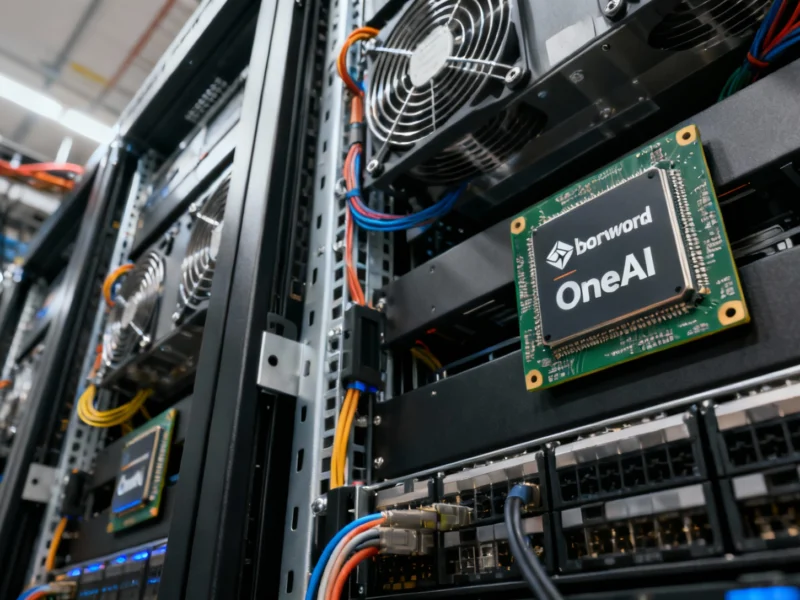Industrial leaders seeking practical AI applications that deliver measurable business impact now have clear guidance from recent research. While many organizations remain stuck in planning phases, proven use cases are already generating significant returns in asset-intensive sectors according to findings from Verdantix’s Industrial AI Radar.
Moving Beyond AI Hype to Tangible Results
The challenge for most industrial organizations isn’t understanding AI’s potential but identifying where to start with implementations that deliver immediate value. Industry experts note that the gap between theoretical AI capabilities and practical applications has narrowed significantly, with specific use cases now demonstrating consistent performance improvements. This shift from experimental to operational AI represents a critical turning point for asset management strategies across manufacturing, energy, and infrastructure sectors.
Verdantix Industrial AI Radar: Identifying Proven Applications
Recent analysis from Verdantix provides a structured framework for evaluating AI maturity and implementation readiness across industrial operations. Their Industrial AI Radar methodology assesses technologies based on both capability and adoption levels, helping organizations distinguish between emerging concepts and field-tested solutions. The research identifies several high-impact areas where artificial intelligence is already delivering measurable operational improvements and financial returns.
Key findings from the analysis reveal that the most successful implementations share common characteristics: clear problem definition, quality data availability, and alignment with existing operational workflows. According to recent analysis, organizations that focus on these foundational elements achieve significantly better outcomes than those pursuing more ambitious but less grounded AI initiatives.
High-Impact AI Applications in Asset Management
Industrial organizations are achieving the strongest results from AI implementations in several specific areas:
- Predictive maintenance optimization – Reducing unplanned downtime by 25-35% through advanced failure prediction
- Production scheduling intelligence – Improving asset utilization and throughput while reducing energy consumption
- Quality control automation – Detecting defects and anomalies with greater accuracy than human inspection
- Energy management optimization – Identifying efficiency opportunities across complex operational systems
- Supply chain resilience – Anticipating disruptions and optimizing inventory levels dynamically
Distinguishing Real AI from Superficial Implementation
One of the critical insights from the Verdantix research involves recognizing the difference between genuine AI capabilities and basic automation dressed as artificial intelligence. True industrial AI systems demonstrate several key characteristics: continuous learning from new data, adaptation to changing conditions, and the ability to handle complex, multi-variable optimization problems. Data from operational technology assessments confirms that organizations often overestimate their current AI maturity while underestimating the implementation requirements for meaningful impact.
The distinction becomes particularly important when evaluating vendor claims and internal capability assessments. Industry experts note that superficial AI implementations typically focus on isolated data analysis rather than integrated operational decision-making, limiting their potential business impact despite impressive technical demonstrations.
Prometheus-AI: Bringing Research to Reality
The transition from research insight to operational reality is demonstrated by implementations like Prometheus-AI for Planning & Scheduling. This practical application shows how Verdantix’s vision of “AI with Impact” translates to daily operations, helping teams make smarter decisions and complete work faster through intelligent resource optimization and constraint management.
Similar to how radar systems provide critical situational awareness in complex environments, industrial AI platforms offer visibility into operational constraints and optimization opportunities that traditional systems cannot detect. This capability becomes increasingly valuable as organizations face growing complexity in their asset portfolios and operational requirements.
Implementation Strategy: Starting Smart with Industrial AI
Successful AI adoption follows a deliberate pattern according to the research findings. Organizations achieving the best results typically begin with well-defined pilot projects addressing specific pain points, then systematically expand capabilities based on demonstrated success. This approach contrasts with broader digital transformation initiatives that often struggle to maintain momentum and focus.
Key implementation considerations include:
- Selecting use cases with clear metrics and stakeholder alignment
- Ensuring data quality and accessibility from relevant systems
- Building cross-functional teams combining operational and technical expertise
- Establishing realistic timelines that balance urgency with practical constraints
- Creating feedback mechanisms to capture lessons and refine approaches
Scaling AI Capabilities Across the Organization
Once initial implementations demonstrate value, the focus shifts to systematic scaling across additional assets, facilities, and operational areas. This expansion requires careful attention to change management, capability development, and technology infrastructure. Recent analysis of successful scaling initiatives highlights the importance of standardized approaches that accommodate local variations without sacrificing core functionality.
The evolution of industrial AI mirrors broader technology adoption patterns, where early successes create momentum for expanded investment and capability development. As organizations build confidence and expertise, they typically identify additional opportunities to leverage AI for competitive advantage and operational excellence.
Future Outlook: AI’s Expanding Role in Industrial Operations
While the current focus remains on practical applications delivering immediate value, the trajectory of industrial AI points toward increasingly sophisticated capabilities. The integration of AI with other emerging technologies, including advanced connectivity solutions and next-generation computing platforms, will enable new levels of operational intelligence and automation.
This technological convergence mirrors developments in other sectors, where complementary innovations create synergistic benefits. For instance, additional coverage of connectivity advancements shows how improved data transmission capabilities enhance AI system performance in distributed industrial environments. Similarly, platform evolution discussions highlight how infrastructure improvements support more sophisticated AI applications.
The practical implementation of industrial AI represents a significant opportunity for organizations willing to move beyond theoretical discussions to focused action. By leveraging research insights from sources like Verdantix and learning from early implementers, industrial leaders can accelerate their AI journeys while avoiding common pitfalls. The combination of proven use cases, practical implementation frameworks, and demonstrated technologies creates a compelling case for immediate action rather than continued observation.



